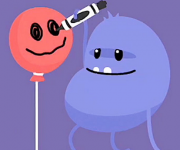Side Effects 2
Side Effects 2 introduces a closed-loop system where two individuals are trapped in a test scenario driven by unpredictability. Both participants are given access to the same selection of anonymous pills, each with concealed effects that only reveal themselves after being taken. There is no combat, no traditional progression—just a constant push against unknown outcomes. The goal is simple: survive longer than your opponent by preserving your resistance, even as each round presents increasing uncertainty and psychological tension.
Risk Decisions and Game Flow
At the heart of Side Effects 2 lies the tension of risk. Each pill picked could lead to healing, damage, or unexpected shifts in status. Over time, the player must learn to interpret subtle patterns, develop strategies for managing health, and decide when to consume or when to pass. Since both players view the same pills, reading the opponent’s behavior becomes just as important as reacting to your own status. Every round increases the difficulty as resistance decreases and randomness takes a heavier toll.
Limited Tools and Smart Usage
The game provides occasional items that offer a way to influence your chances, but they must be used carefully. These include:
- Single-use cures that reset certain conditions
- Resistance stabilizers that slow health loss
- Preview tools to scan the pill set
- Lock mechanisms to block one pill from rotation
- Swaps that alter the visible options
Each tool has a single purpose and a long cooldown or restriction. Managing these tools correctly can be the difference between sudden defeat and calculated survival. Players must track their use and observe how opponents react when tools appear or vanish.
Competitive Focus and Isolation
While Side Effects 2 presents itself as a two-player survival setup, it often feels like a solo challenge against your own nerves. With no direct conflict or dialogue, the pressure builds from within. You have no way to stop the opponent directly, only to outlast them by making slightly better choices over time. This sense of isolation adds to the atmosphere, making each mistake more personal and each success feel like a narrow escape from collapse.







































































